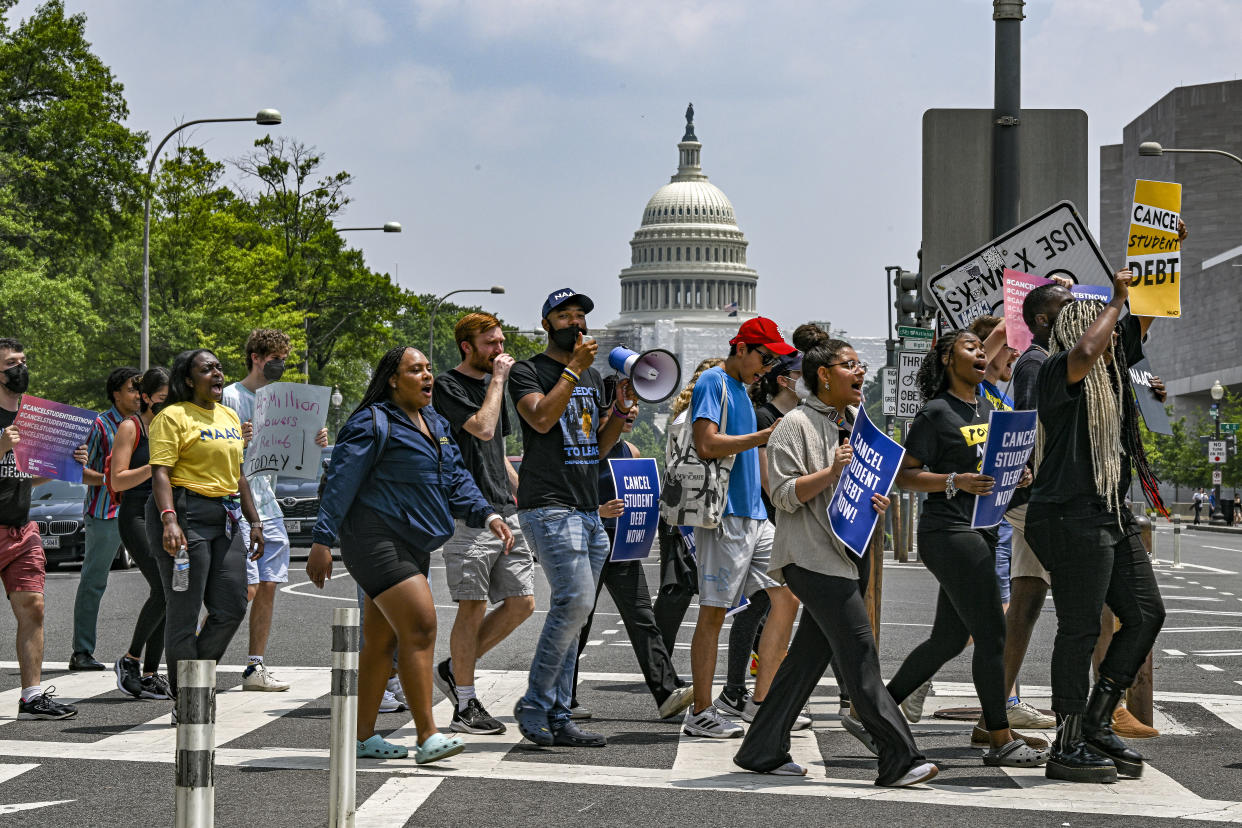Student Loan Bills Are Dropping Next Month for Many, but There’s a Hiccup

On July 1, millions of federal student loan borrowers will see their monthly bills drop — some by as much as half — as the Biden administration’s new income-driven payment plan, known as SAVE, takes full effect.
But first, the government and its four loan servicers have to resolve a major hiccup.
Starting next month, borrowers enrolled in the SAVE plan with only undergraduate loans will have their monthly payments capped at 5% of their discretionary income, down from the current 10% limit. (Graduate school loan payments will remain at a maximum of 10%, while people with a mix of undergrad and graduate loans will have a weighted payment.)
Sign up for The Morning newsletter from the New York Times
The loan servicers are relying on the Education Department to send them the new loan amounts for every borrower. But the department has not yet finished making calculations, according to three people familiar with the process, who insisted on anonymity because they were not authorized to speak about the issue publicly.
To buy time, the department instructed its servicers to place borrowers with payments due in early July into an administrative forbearance for the month, which means no payment from them will be required.
More than 8 million borrowers have enrolled in the SAVE plan. Many received notices this month saying that their account had been placed into forbearance, resulting in widespread surprise and confusion.
“I was freaking out a little bit,” said Iván Barragán, who got a letter from his servicer, MOHELA, last week. “I thought I had done something wrong. Then I quickly went on Twitter and saw that a bunch of people were also getting the notices.”
The letter he received from MOHELA did not say why his account status had been changed. He got an explanation only after he contacted the company, which sent back a note saying that the one-month forbearance was a timeout so his payment rate could be recalculated. (A MOHELA spokesperson directed questions about the issue to the Education Department.)
Vanessa Harmoush, a spokesperson for the Education Department, confirmed the recalculation delay.
“We look forward to providing millions of borrowers with lower monthly payments,” she said. “Some borrowers may be placed in a brief processing forbearance to ensure they can access the full benefits of the SAVE plan and that their new payment amounts are accurate.”
These forbearances will count as a qualifying month of payment for borrowers on SAVE and other plans that lead to loan forgiveness after a set number of payments, Harmoush said. (People on SAVE can have their remaining loan balances eliminated after 10 to 20 years of monthly payments.)
That’s a relief for Barragán, who works as an administrator for the Los Angeles County Department of Public Health. He is pursuing Public Service Loan Forgiveness, a program that discharges the remaining loan balance for government and nonprofit workers after a decade of qualifying payments.
For such borrowers, this month becomes essentially a freebie; they can pay nothing and still get credit. Barragán, who recently married, plans to put the $430 he’ll save toward a planned wedding celebration.
The process of essentially restarting the $1.6 trillion federal student loan payment system last fall — after a three-year pause prompted by the economic turmoil that accompanied the coronavirus pandemic — has been turbulent.
The Biden administration has worked to overhaul the system with new rules and a plethora of fixes for long-troubled loan forgiveness programs. Those efforts have led to the elimination of $167 billion in debt for nearly 5 million borrowers; the SAVE payment plan allowed more than 4 million low-income borrowers to qualify for $0 monthly payments.
But making so many changes so quickly has been challenging, and glitches and errors — some affecting hundreds of thousands of people — have been common.
Representatives for loan servicers, speaking anonymously because their contracts with the Education Department prohibit them from speaking publicly, said they were frustrated by the last-minute SAVE calculation delay and the scrambling it required.
Borrowers, though, are eager to see their payments slashed next month. The reductions will happen automatically for those enrolled in SAVE.
c.2024 The New York Times Company

 Yahoo News
Yahoo News 
